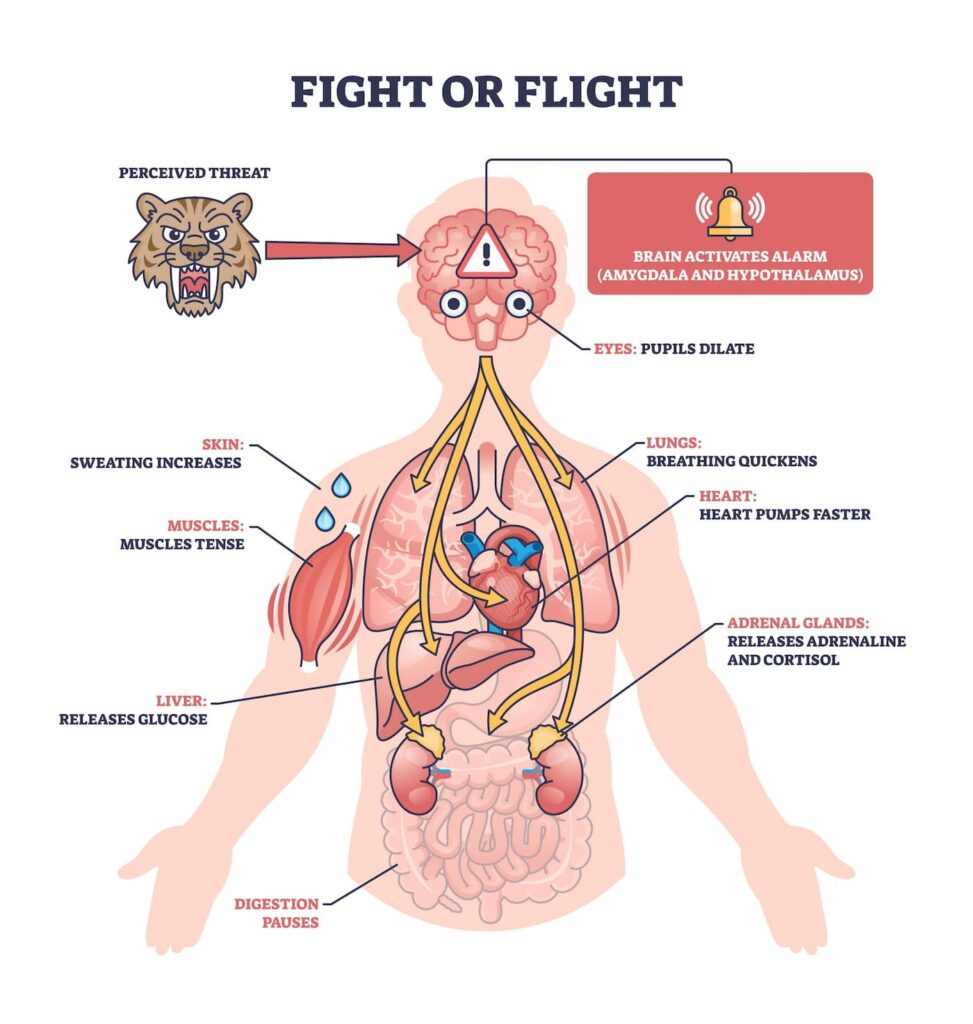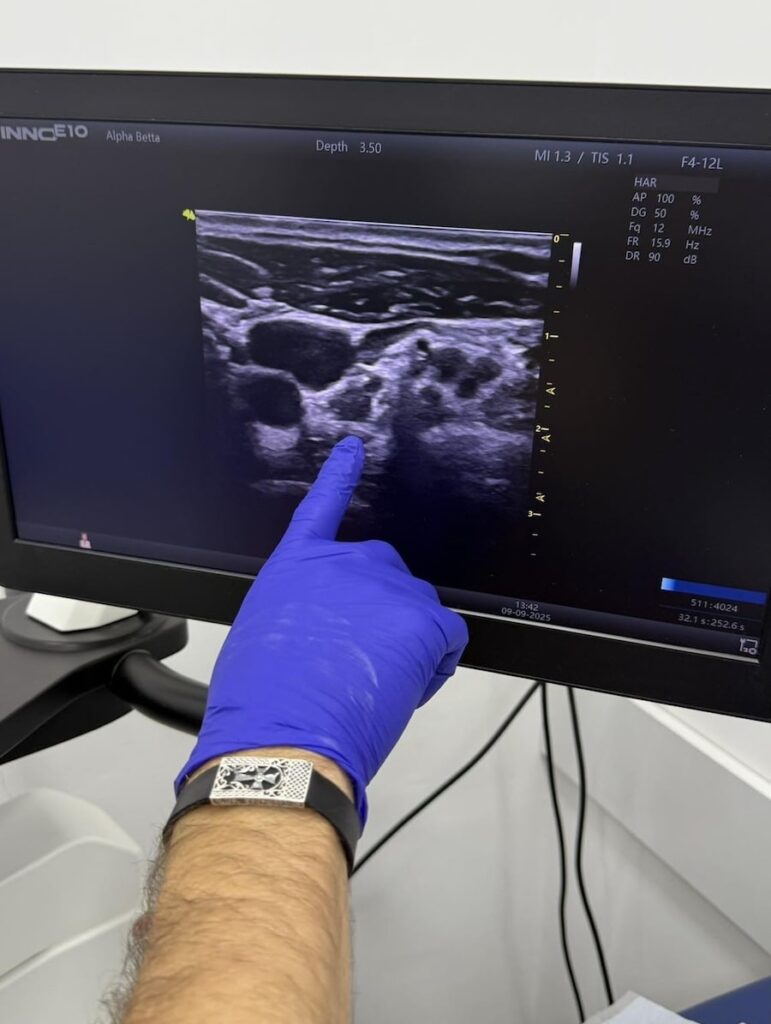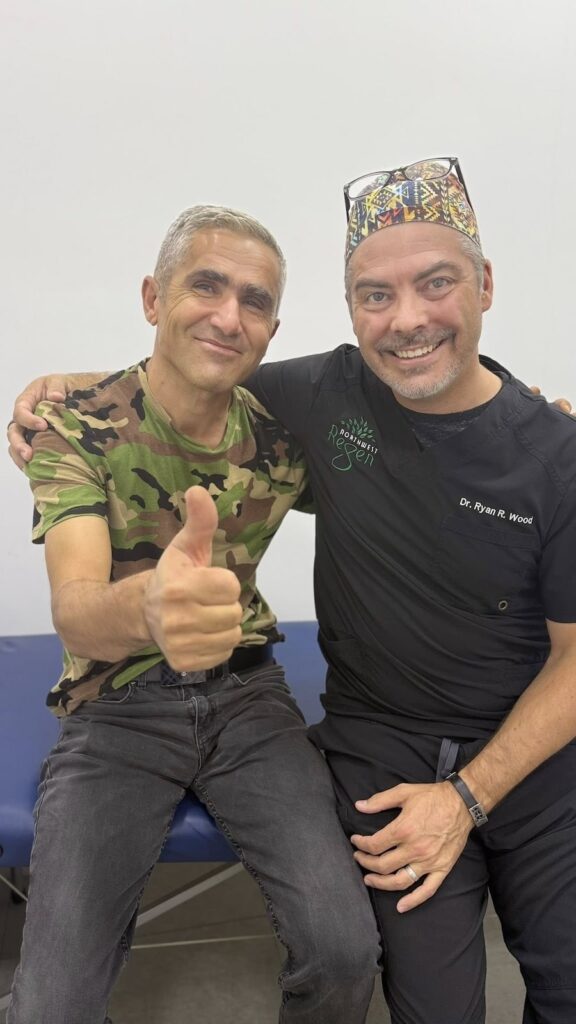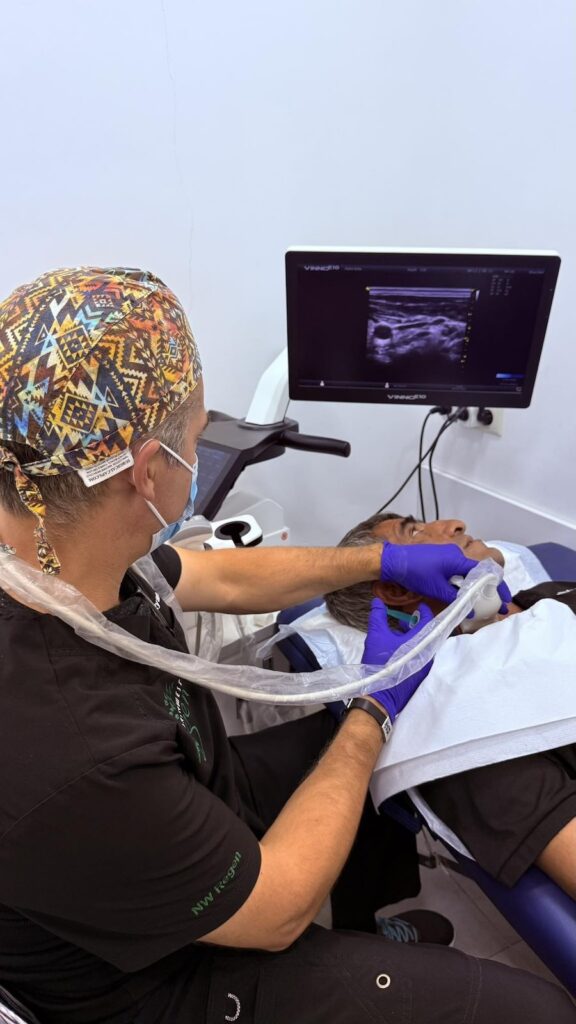Can a person’s body really stay locked in ‘Survival Mode?’ Yes.
One of the most striking things we see in our Ehlers-Danlos Syndrome (EDS), dysautonomia, and POTS patients is that their bodies are doing exactly what they were designed to do — but they can’t turn it off.
Their fight-or-flight system is stuck in overdrive.
This isn’t psychological. It’s not ‘just anxiety.’
It’s a physiologic feedback loop that starts in the body’s connective tissue and ends in the brain — keeping both the body and the mind locked in survival mode.
It Starts with Connective Tissue
In EDS, the collagen and elastin that give blood vessels their strength and elasticity are weaker and more compliant.
When those vessel walls stretch instead of constrict, blood pools in the lower body when standing, reducing venous return and cerebral perfusion.
The brain senses this drop in pressure as an emergency.
The baroreceptors in the carotid arteries and aorta sound the alarm:
“Pressure’s falling — activate the sympathetic system!”
The adrenal glands release adrenaline and norepinephrine to raise heart rate and constrict vessels.
It works for a moment — but because the connective tissue remains lax, the system never stabilizes. The alarm never silences.
Over time, this creates a continuous loop of orthostatic stress and sympathetic overactivation — the body running on emergency power around the clock.

The Result: Chronic Sympathetic Overdrive
When adrenaline and norepinephrine stay elevated, they don’t just affect blood flow — they reshape brain function.
- The amygdala, the brain’s alarm center, becomes hypersensitive.
- The hippocampus, which provides safety context and memory integration, becomes suppressed.
- The prefrontal cortex, responsible for calm reasoning and regulation, loses its ability to override fear responses.
When the amygdala takes control, even minor physiologic changes — lightheadedness, palpitations, or a skipped heartbeat — can trigger intense panic or dread.
This is why so many EDS and POTS patients describe feeling “wired but tired,” anxious for no reason, unable to calm down, and mentally exhausted.
Their physiology is broadcasting a constant threat signal — and the brain believes it.
The Brain in Survival Mode
Prolonged sympathetic dominance produces measurable neurologic change:
- The amygdala enlarges and becomes over-reactive.
- The hippocampus loses volume, weakening memory and safety processing.
- The prefrontal cortex loses blood flow and metabolic support, impairing focus, reasoning, and emotional control.
It’s the same neurobiology we see in chronic trauma or PTSD — except in EDS and dysautonomia, it begins with connective tissue instability, not psychological trauma.

Stellate Ganglion Block: A Physiologic Reset
At NWRegen, we’ve performed nearly 3,000 Stellate Ganglion Blocks (SGBs) for trauma, dysautonomia, and autonomic hyperarousal — exclusively using high-resolution ultrasound guidance.
We perform dual-level, bilateral blocks to address the full cervical sympathetic chain and its upper thoracic connections.
Fluoroscopy is NOT the gold standard.



Dr. Ryan Wood, ND, DC, RMSK, is recognized as one of the leading SGB
and ultrasound-guided interventional experts on the West Coast.
Clinical Leadership & Education
Dr. Ryan Wood, ND, DC, RMSK, is recognized as one of the leading SGB and ultrasound-guided interventional experts on the West Coast. He serves as faculty for the International Academy of Regenerative Therapies (IART), providing advanced education in ultrasound-guided interventional medicine to physicians across the U.S. and internationally.
Dr. Wood also contributes to Institutional Review Board (IRB) research studies on regenerative and autonomic interventions; He was invited by the Armenian Ministry of Health to lead a diplomatic medical mission, training physicians in SGB and ultrasound-guided nerve modulation for trauma recovery.
https://nwregen.com/services-offered/regenerative-orthopedics/He has been invited to collaborate with U.S. Special Forces members, lecture to first responders, and provides advanced orthopedic and neurologic care for those with complex connective tissue disorders.
NWRegen’s approach reflects that level of depth — blending anatomy, physiology, and precision medicine to restore balance in the most complex systems.
What Happens When the Loop Breaks
The stellate ganglion is the body’s sympathetic “relay switch.”
By carefully quieting it with a small volume of anesthetic, we temporarily pause the sympathetic output, allowing the parasympathetic system to re-engage.
In plain terms: it helps the body remember what calm feels like.
Patients often describe the experience as:
- “It’s like someone turned down the static in my body.”
- “My heart finally slowed down.”
- “For the first time in years, I could take a deep breath.”
Clinically, we see:
- Lower resting heart rate
- Improved orthostatic tolerance
- Calmer mood and emotional stability
- Better sleep
- Brighter cognition and energy
These are not placebo effects — they’re measurable changes in autonomic balance and amygdala activity.
The Brain-Body Loop, Reversed
When sympathetic output quiets, healing begins:
• The amygdala rests.
• The hippocampus restores memory and safety context.
• The prefrontal cortex regains top-down regulation.
• The body exits survival mode — blood flow normalizes, vagal tone improves, digestion returns.
This isn’t sedation.
It’s resetting the body’s operating system.
Why This Matters
EDS, dysautonomia, and trauma-related disorders all converge at the same crossroad — connective tissue fragility and autonomic dysregulation.
True healing requires addressing both the mechanical and neurologic components.
At NWRegen, our focus is to restore regulation, not suppress symptoms.
The Stellate Ganglion Block is one of the most powerful tools we’ve seen to help patients step out of survival mode and back into balance.
After thousands of procedures, international teaching invitations, and ongoing research collaborations, we’ve seen first-hand what this reset can do:
- Restore calm,
- Improve focus,
- Stabilize circulation, and
- Help people finally feel safe in their own bodies again.
This isn’t magic.
It’s anatomy, neurophysiology, and compassionate medicine — working together.
And for me personally — this is my greatest professional passion.
After performing nearly 3,000 blocks and witnessing the profound change they bring to people living in constant overactivation, it’s impossible not to be inspired.
My goal is to share SGB with the world — to help other clinicians understand its power, and to help patients everywhere know that their bodies can reset.
This work has become more than a procedure — it’s a mission to restore peace, balance, and hope in people who have forgotten what calm feels like.
Educational content only. This post does not constitute medical advice. Stellate Ganglion Block (SGB) is an advanced, ultrasound-guided interventional procedure performed by trained clinicians following comprehensive evaluation. NW Regen performs all SGBs using dual-level, bilateral ultrasound guidance with precision safety protocols.

Dr. Ryan Wood is a licensed Naturopathic and Chiropractic physician focusing on interventional orthopedic and orthobiologic medicine and injection therapies as well as general musculoskeletal and non-surgical orthopedic medicine.
With almost two decades of orthopedic practice across multiple disciplines, he has the necessary experience to ensure proper diagnoses and management of complex cases.


